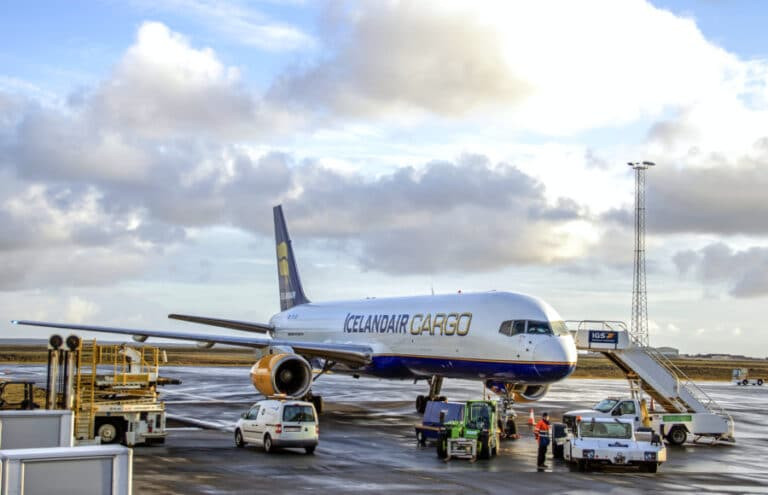Fleet upgrades have extended the cargo possibilities for Icelandair Cargo as the addition of widebody aircraft on routes has boosted capacity and the chance to move more fresh seafood.
The carrier was affected by the Iceland economical crash in 2008, but fleet changes and improving economic conditions has lead to an increase in imports this year.
Icelandair Cargo managing director, Gunnar Már Sigurfinnsson (pictured below) says there has been strong demand for fresh fish and it has been and will be the strongest product looking ahead.
Performance varies across trade lanes, he says: “We do have some good trade sectors but there is no one really stronger than others. We have about 50 destinations with direct flights out of Iceland in our network, flown either by freighters or by passenger aircraft. You can say 20-30 per cent of them are really strong, and then 20-30 per cent are weak and then the rest average.”
Seafood is the strongest sector, Sigurfinnsson says: “It has been strong these last years, particularly to the US where we have had high demand for years. We serve that market now with widebody passenger capacity, which is increasing our possibilities a lot.
“We have developed a logistic concept with the industry where we can bring the fish to the consumer in US or Europe basically within 36 hours after it comes out of the sea.
“That gives us product that has more freshness than any other similar product at the market. We have been working on fine tuning weaknesses for years and I believe we have now a developed a good logistic product, bringing our clients an advantage.”
The strongest export seafood markets from Iceland are the East Coast of the US, UK and to the European continent.
Fleet upgrades have given Icelandair more possibilities, and Sigurfinnsson says in the past it moved most cargo by freighters, but in 2017 it expects to move more by belly than freighters.
Icelandair has been adding widebody Boeing 767-300 aircraft to its fleet and increased the number of this aircraft giving the cargo arm more opportunities to accommodate growth plans.
He notes: “The fact we work with both freighters and good capacity of belly creates lot of flexibility for our operation, which makes us strong at our home market. Our freighters are still in good shape and I don’t see any major changes there for the coming years.”
Sigurfinnsson says extra widebody capacity is a “game changer” and due to growth in belly capacity through passenger aircraft there is currently no need to add freighter capacity, but there is a need to add freighter capacity to Greenland and it is aiming to come up with a solution soon.
It’s base Keflavik International Airport has grown, but he says the airport’s facilities have not coped with the increasing number of airlines operating and authorities are looking to make upgrades to accommodate growth.
Icelandair itself has grown from 10 aircraft a few years to ago to more than 30 aircraft in only few years along with two freighters.
Sigurfinnsson says it has been a challenge to deal with growth as infrastructure needs to be adopted, so it working on new facilities at Keflavik to make operations more efficient.
He adds: “We will see lot of changes in the coming future at the airport and a new cargo area we will move too, but not in the next few years. We have increased the space for perishable and pharma products and our warehouse space about 30 per cent.”
He believes air cargo in Iceland can be further developed through e-freight, modernisation and shorter transport times, while more perishables can be moved by air.
He says Icelandair Cargo is aiming to move more transit cargo between Europe and North America using its expanding widebody capacity, as previously, due to the lack of space it was unable to compete in this market.
Sigurfinnsson sees great potential in operations to Greenland from Iceland and notes it needs to add capacity for the freight market, but it is doing that with sister company Air Iceland.
Overall he is optimistic for airfreight as feels coming generations are changing buying behavior and setting new standards for delivery and quality, both in favour of air cargo.
He adds: “Short delivery time is a key in e-commerce world and airfreight should have great potential to be in a key role. I believe the future generation will be more demanding on healthy food and fresh products.
“This means more demand for shorter delivery time, giving air cargo great potential again. In a developing world we will have more people buying products that need air.”





